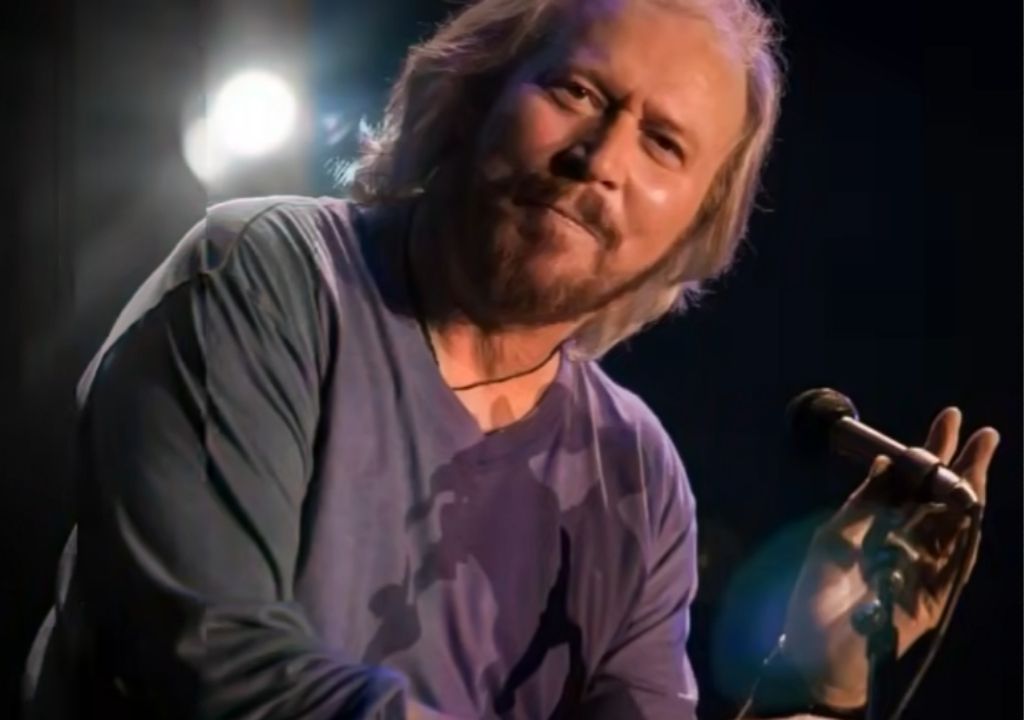
The song “Eyes That See in the Dark” holds a unique and significant place in the illustrious career of Barry Gibb, not as a chart-topping hit for himself, but as the quintessential example of his unmatched talent as a songwriter and producer for other artists. While the public is most familiar with the iconic version by Kenny Rogers, Gibb’s own rendition, originally created as a demo, reveals an intimate and powerful insight into the song’s creative process and its intended emotional depth. This stunning ballad, originally composed in the style of adult contemporary pop, symbolizes a pivotal moment when Barry Gibb bridged his signature sound to embrace the wider worlds of country and soft rock.
Barry Gibb’s version of “Eyes That See in the Dark” was officially released in October 2006 as part of the digital album The Eyes That See in the Dark Demos. This rare release was not a standard studio album but a collection of original demo recordings, crafted alongside his brothers Maurice and Robin Gibb, intended for Kenny Rogers’ 1983 album that shares the same title. These demos serve as musical blueprints, showcasing Barry’s visionary approach before the songs were ultimately interpreted by the country legend Rogers. The decision to share these intimate recordings decades later shocked fans, offering a gripping glimpse into the genesis of a timeless classic. It stands as a testament to the exceptional quality of Gibb’s work that these demos, never meant for mass consumption, merited official release.
The song belongs to the soft rock and adult contemporary genre. Although Kenny Rogers made the song famous in the country scene, Gibb’s raw demo is steeped in the lush, melodic, and vocally-driven sound that marked the Bee Gees’ later years and Barry’s solo works. His distinctive falsetto shines through, while his natural voice is also used to mirror the vocal range intended for Rogers. The demo’s instrumentation is notably sparser than the polished production of the Rogers version, accentuating the song’s core: Gibb’s expressive vocals, acoustic guitar, and a simple but powerful arrangement. This soft rock base granted the track a crossover appeal, reaching audiences beyond just country music and gaining mainstream success.
The song’s achievements are primarily linked to its immense success as performed by Kenny Rogers. The 1983 Eyes That See in the Dark album, produced entirely by Gibb, was a global sensation, achieving multi-platinum certification in the USA and Canada. The album’s title track was released as a single, though it was overshadowed by the blockbuster duet “Islands in the Stream” with Dolly Parton, which climbed to the very peak of the Billboard Hot 100. Specifically, “Eyes That See in the Dark” reached respectable positions: number 30 on the US Country chart, number 4 on the US Adult Contemporary chart, and number 61 in the UK. Yet, its true accomplishment lies not in individual chart positions but in the overall triumphant success of the album, marking a creative and commercial milestone — a testament to the powerful synergy of country and pop collaboration.
Barry Gibb’s original demo, while not a commercial hit in its own right, carries monumental significance. Its delayed release as a demo album unveils Gibb’s masterful melody crafting and structure, making it a vital artifact for music historians and ardent fans. The recording captures the raw emotional heart of the track—a soaring ballad about transcendent love—stripped of the glam and polish that characterized Rogers’ hit version. Barry Gibb’s demo solidifies his legacy, not only as a celebrated member of the Bee Gees but as a visionary songwriter whose profound influence transcended his own stage presence and left a lasting imprint on popular music’s landscape.
